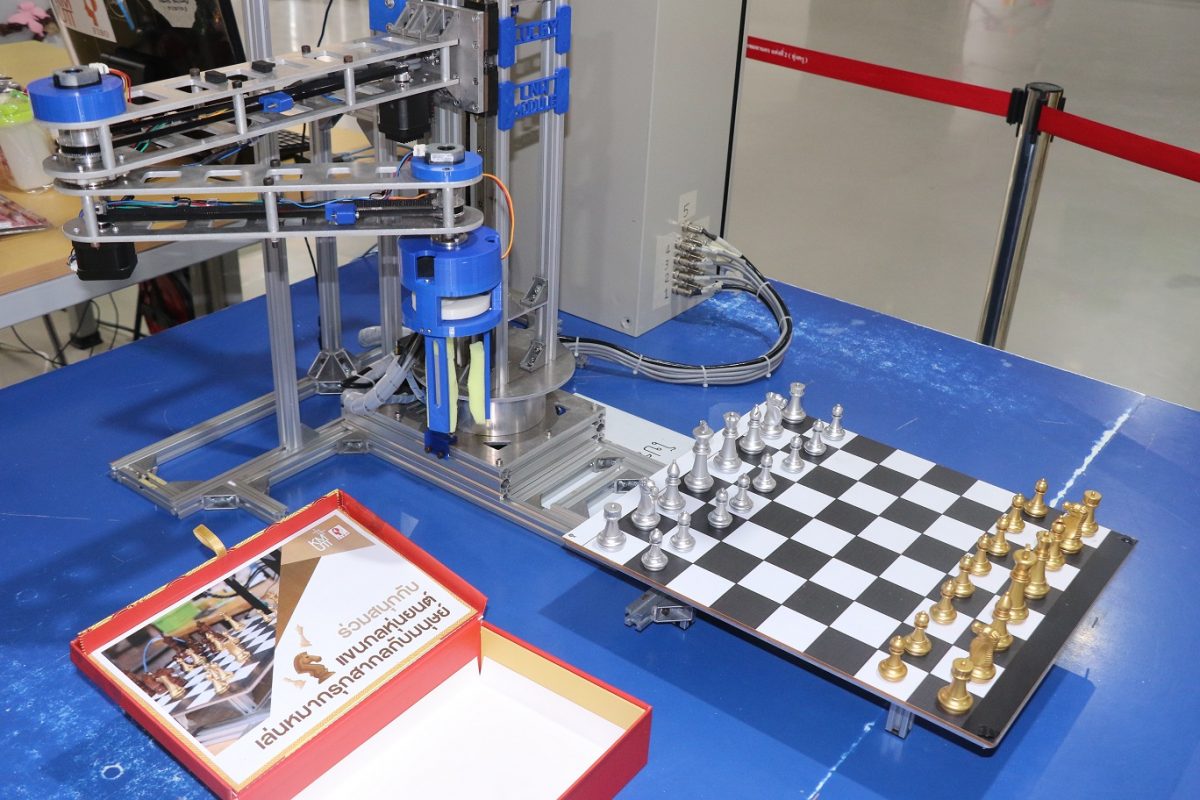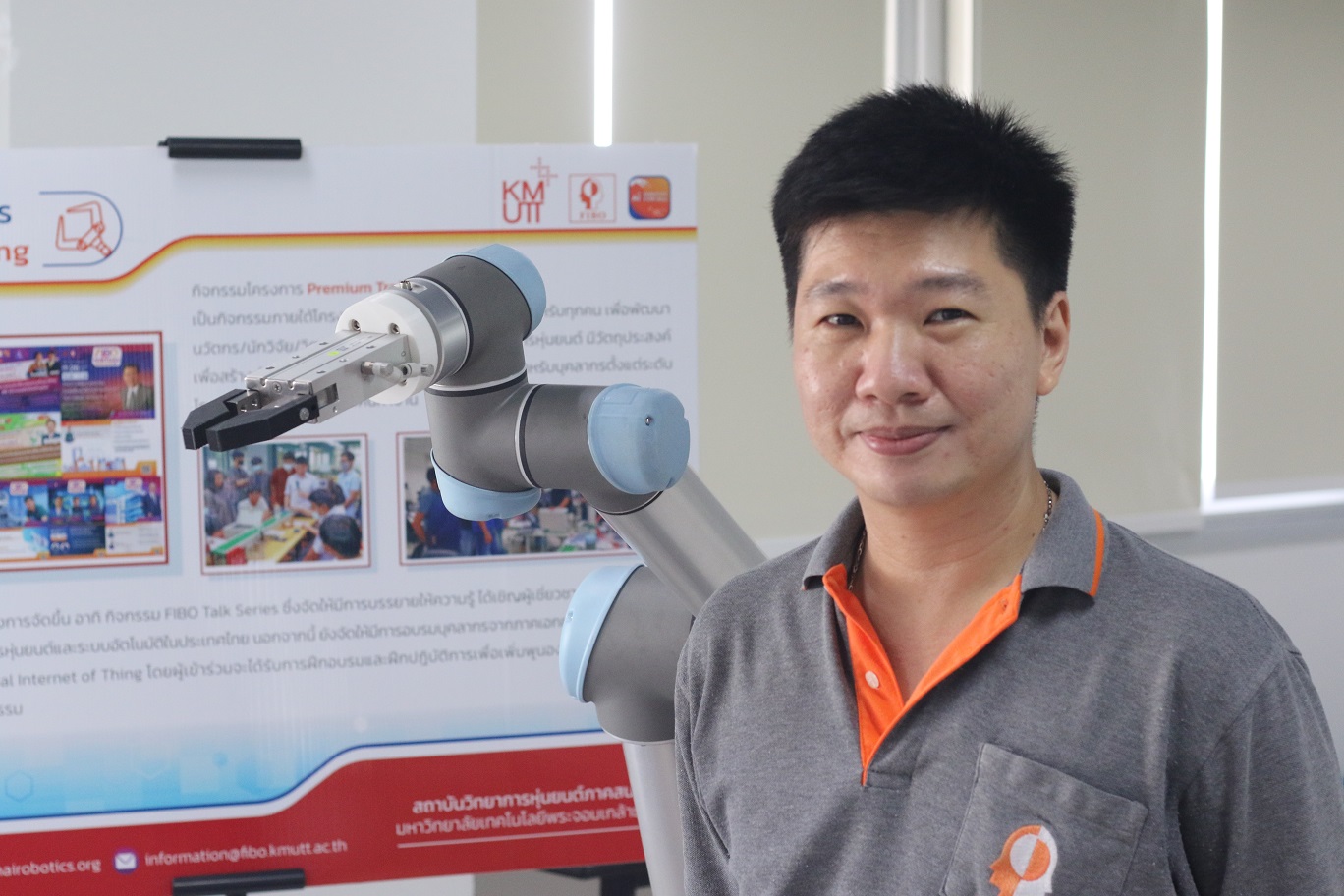
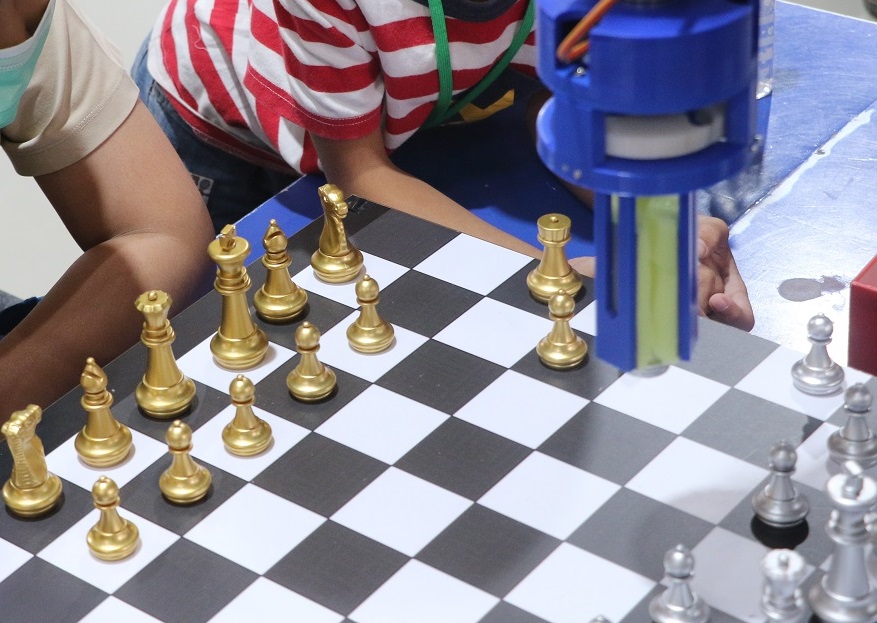
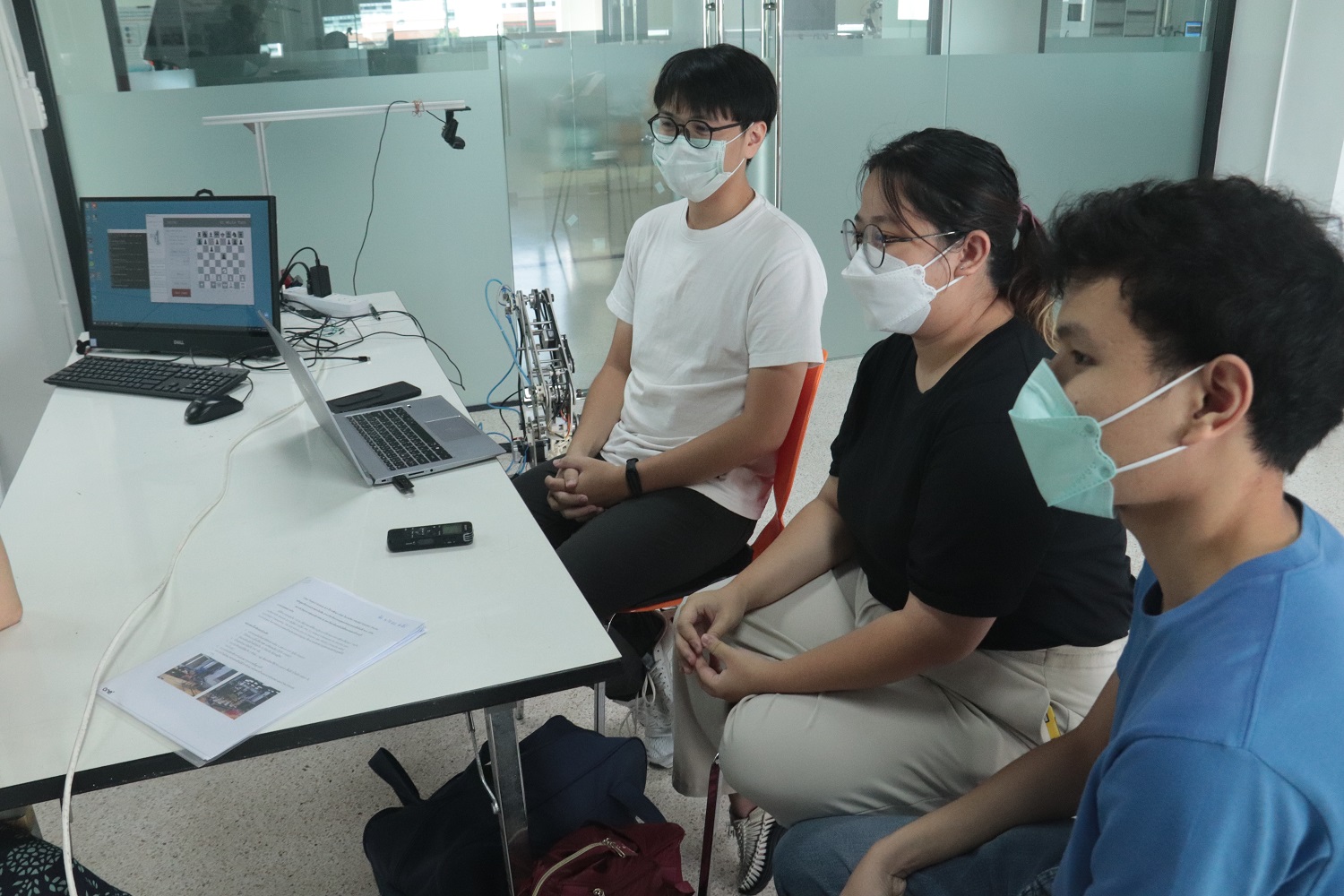
In 2020 academic year, third-year students at KMUTT’s Institute of Field Robotics (FIBO) built chess-playing robots for their class project. The class project, which is assigned to FIBO students every semester except for their first semester, offers students an opportunity to apply knowledge and skills they have learned to create functional robots. The themes for class projects are diverse and vary from year to year.
Dr. Narongsak Tirasuntarakul, a lecturer at FIBO, states that an assignment to create chess-playing robots was given to third-year students in the Bachelor of Engineering Program in Robotics and Automation in 2020. Each team, consisting of seven students, had four months to build the robot based on knowledge they had acquired from various courses, including Artificial Intelligence for Robotics and Automation Engineering, Introduction to Robotics, and Computer-Aided Technologies. The project required students to combine knowledge in multiple disciplines including electrical and electronics engineering, mechanical engineering, sensor technologies, and computer programming to build a serial-link robotic arm that can play chess against human opponents.
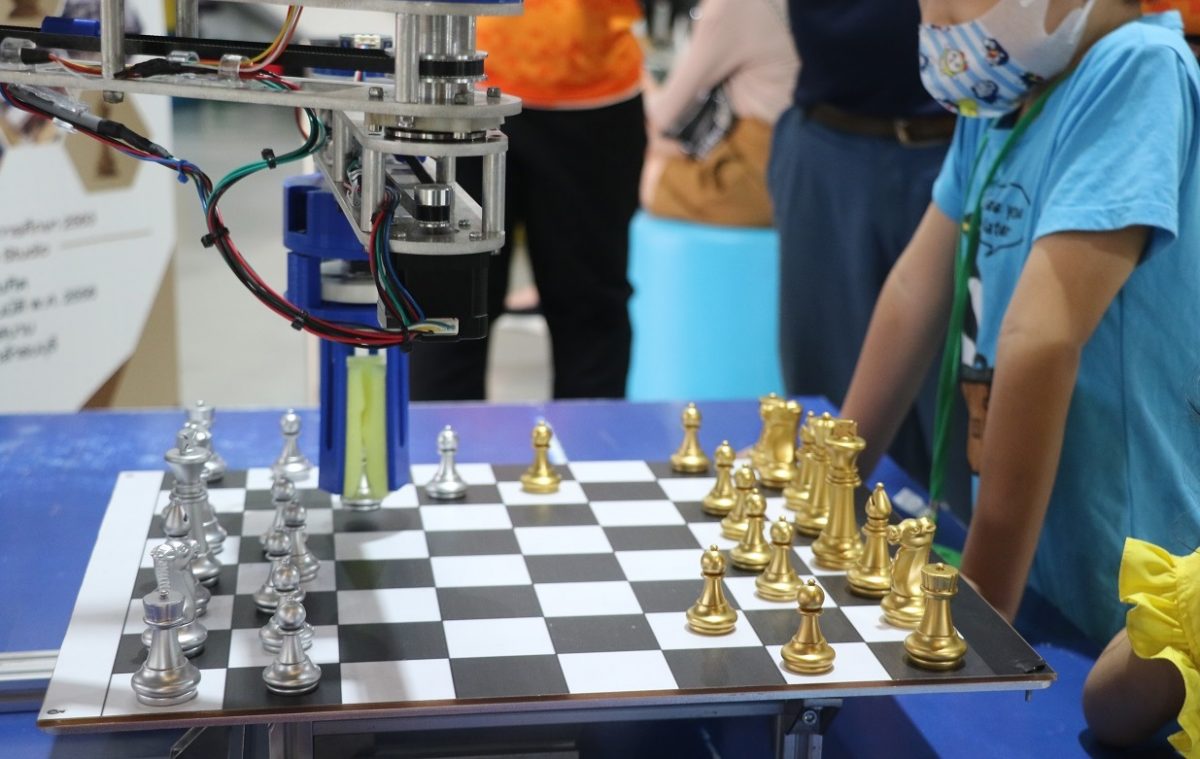
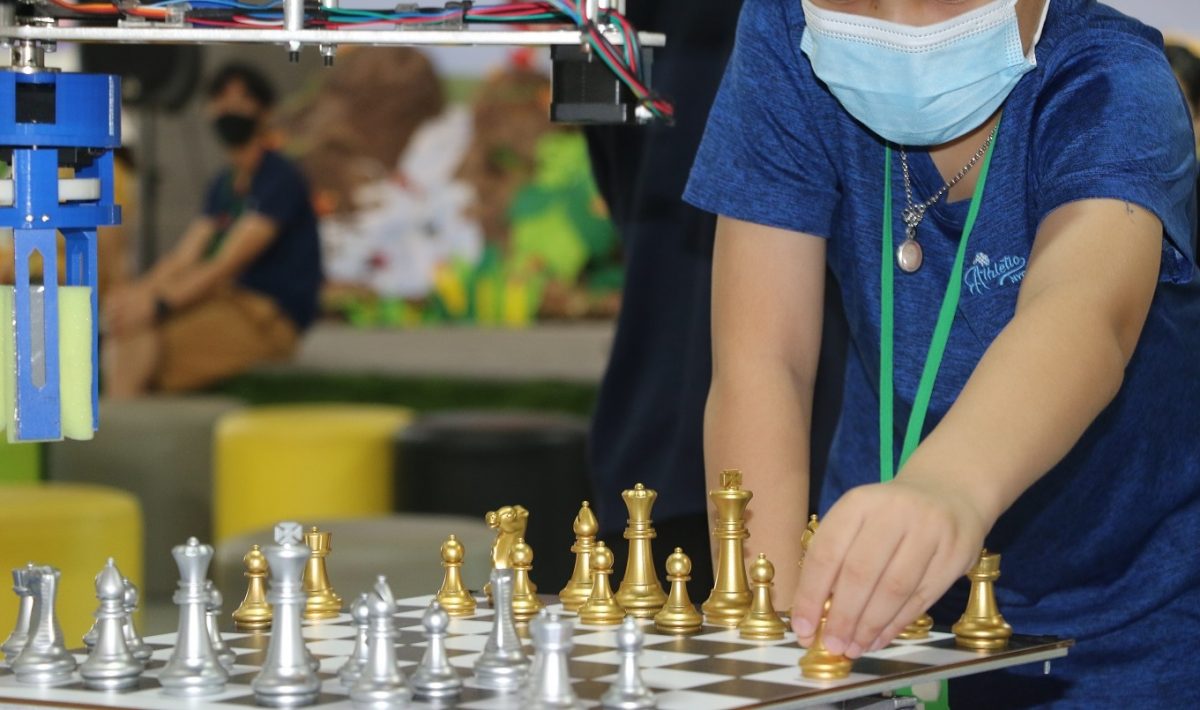
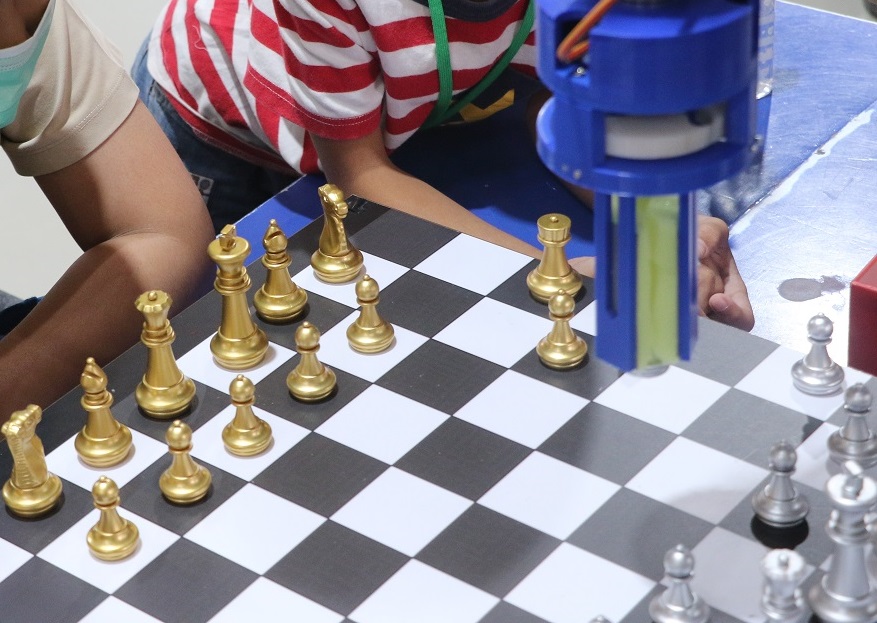
Several criteria were set for students to design the chess-playing robot. The robot arm must have at least 4 degrees of freedom, excluding the gripper. The gripper must be able to handle objects of different shapes. The weight of the robot should not exceed 15 kg, excluding the power supply, and the weight of the chess pieces should not exceed 200 g. Up to 2 cameras are allowed. AI must be employed to evaluate and determine the moves. It can play under basic international chess rules and is capable of capturing and removing the opponent’s chess pieces from the board and replacing with its pieces.
Students taking part in this class project describe their experience in creating chess-playing robots. “This class project allows us to integrate multiple disciplines, such as mechatronics, electronics, engineering design and AI,” says Thanatat Pronpraserd. “The difficulty lies in finding the best way to make various systems work harmoniously, and teamwork is the key to reach a successful outcome. Personally, I enjoyed the Robotics Studio course because it gave me an opportunity to work with others and combine knowledge from various subjects into this project.”
“We are given a class project every semester, offering an opportunity to combine knowledge and skills we have previously acquired into building a robot,” adds Pattranit Pratoomket. “This hands-on learning helps prepare us for our future career. Besides teamwork, I learned to develop my communication skill. My favorite subject is electronics because at FIBO, I get to design and construct electronic circuits.”
Matas Manawakul explains that while his teammates worked on something tangible like circuit boards and programming, he was responsible for developing a mathematical model based on images. The project gave him an opportunity to put the theory into practice and seeing how his creation works seamlessly with other systems designed by other teammates was gratifying. “The class project has enhanced my skills in teamwork, planning, and problem-solving, which will become extremely useful for workplace success,” adds Matas.
This chess-playing robot was exhibited at the Bangkok Children’s Discovery Museum II (Thung Khru) in August 2022 and the AI/ROBOTICS FOR ALL EXPO 2022 in September 2022.
